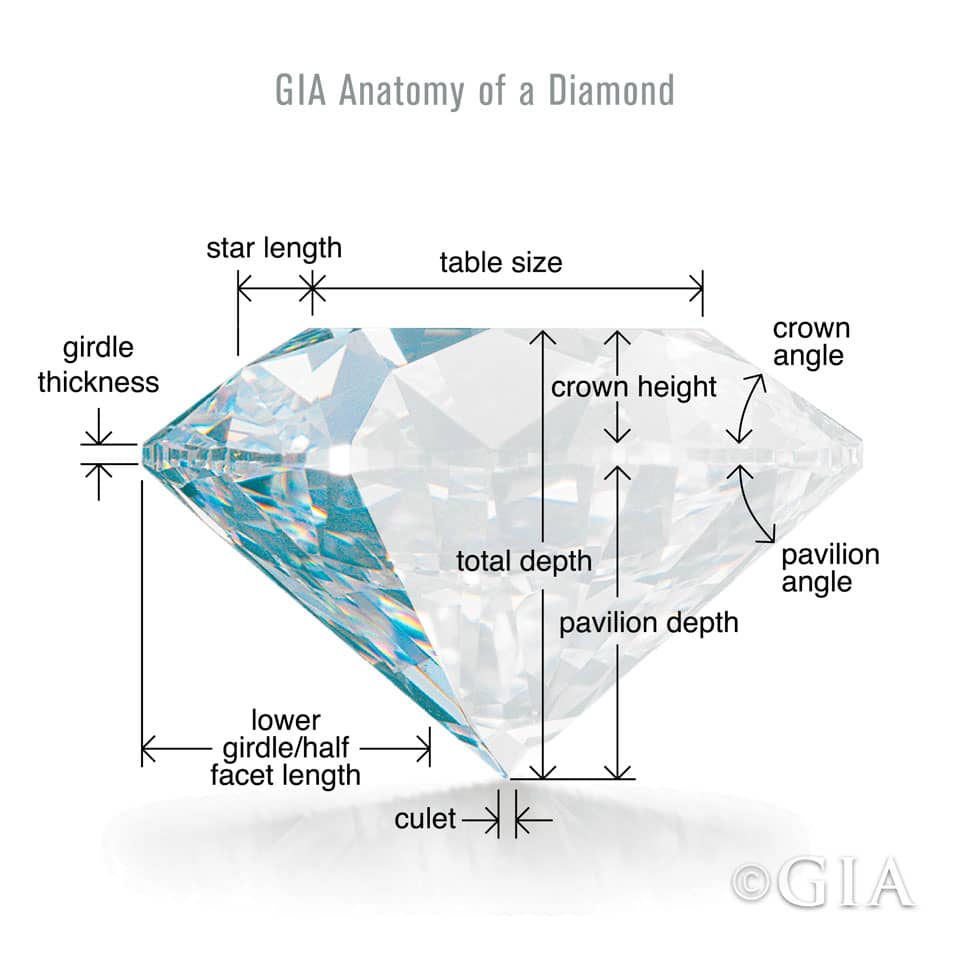Diamond Anatomy
Diamonds are fascinating gems. Before they become the symbol of love from one person to another, they are the project of a craftsman. The craftsman diamond cutter takes hold of a rough diamond that is barley more impressive than a rock found in a garden or on the side of a road.
The job of the diamond cutter is to find the beautiful gem with in the rough rock. The diamond cutter knows that the diamond has unique properties that allows it to be cleaved, cut, and polished like no other gemstone. From there, the cutter plans his coordinated offensive to unleash the beauty hidden within. When finished, the diamond will have 57 facets placed where the most light will reflect out the top creating sparkle.
Anatomy of a Diamond
In order to understand the anatomy of a diamond, it should be broken down into its parts. The diameter, table, girdle, crown, pavilion, culet and depth are the main parts of a diamond. It is important to note that the carat weight is not a factor when calculating the cut of the diamond.
The average 1 carat round diamond can be 6.50 millimeters across. And the average 2 carat is 8-8.2mm across. The carat weight is mostly irrelevant when discussing percentages. The table and depth percentages need to be in the same ranges whether the round diamond is a half carat or 50 carats.
Although the diameter is not a part of the diamond, it is crucial to know the minimum and maximum diameter of a round diamond. The top most part of the diamond is called the table. Without knowing the diameter of the diamond, the table percent could not be calculated.
The average table percent on round diamonds can be 53-60%. To maximize brilliance and sparkle, the table percent should be around 55-57%.
More about Diamond Anatomy
The girdle is the outer part of the diamond and its depth is what is measured. When cutting the diamond, the cutter wants that girdle to be as close to the rough diamond as possible. This will maximize its weight.
The crown is the part of the diamond above the girdle and the pavilion is below the girdle. The crown and pavilion are broken it its own parts as well. The culet is the point at the bottom of the diamond's pavilion. Years ago, the culet area was cut across close to the point giving a visible flattened area. Today, it is known as a pointed culet.
The relationship of each of these parts and how they are cut create the diamonds sparkle and life. The diamond cutter has taken his journey as far as it will allow. The diamond will become the symbol of love from one person to another.


